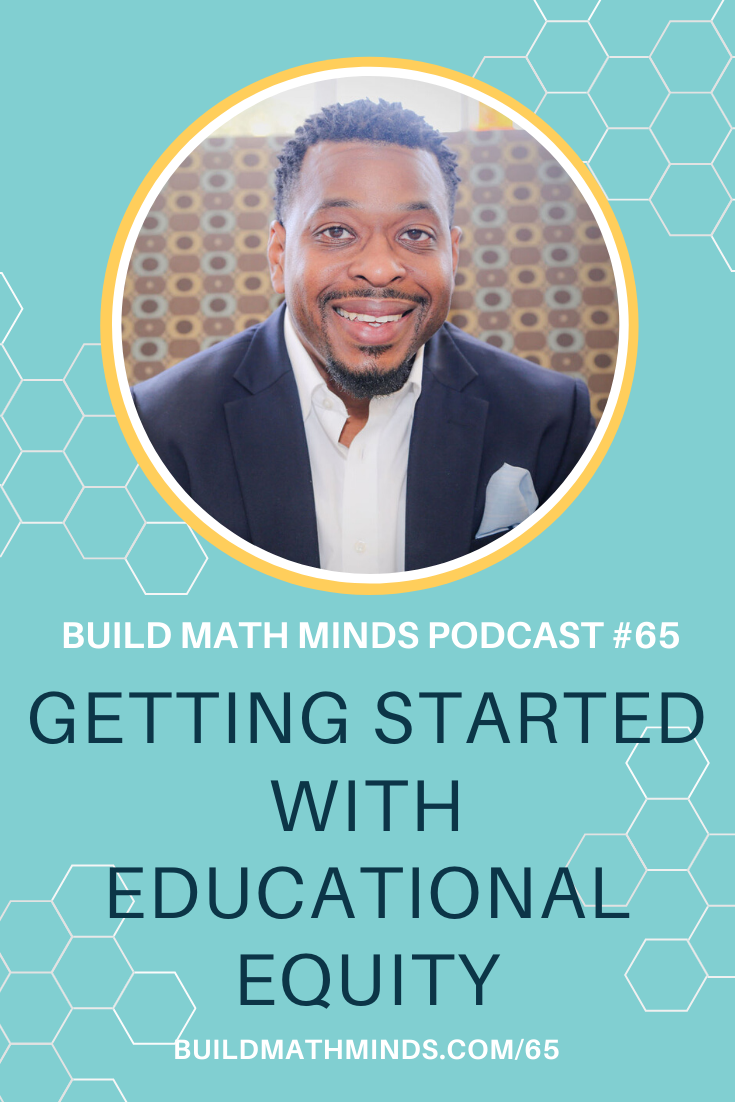Resources mentioned in this episode:
Getting Started with Educational Equity: Ten Steps to Get You on The Right Path Towards Leading Equity by Sheldon Eakins.
Register for the Build Math Minds Virtual Summit
Today I’m pleased to announce that someone I’ve been learning from about increasing Equity & Access in education has joined the line-up of speakers for the Build Math Minds Virtual Math Summit.
In my previous podcast I encouraged you to learn from Sheldon Eakins and the Leading Equity Center. I’m very excited that Sheldon will now be kicking off the BMM Virtual Math Summit and sharing with us 5 Steps Towards Equity.
So I decided that in today’s podcast I’d share an excerpt from a free resource Sheldon has on his website called Getting Started with Educational Equity: Ten Steps to Get You on The Right Path Towards Leading Equity. You can find it on his main site SheldonEakins.com.
On page 13, Sheldon writes:
“We need to learn to disrupt the way we approach learning from a ‘one size fits all’ approach. The way your students see and exist in the world is different; different from you and different from each other. Your students of color have generationally had to deal with issues that continue to suppress their identities, require them to code switch (alternating between two or more languages), and survive in dual worlds. The world that they physically live in and the world their teachers expect their students to live in. What is needed is a mindset shift; we need educators to change how they see and recognize culture in the world.”
As I talked about in the previous podcast, I believe that it’s important for us to stop saying we don’t see color. I know it is well-meaning and the thought is that we teach all kids no matter the color of their skin, But, the color of our students’ skin directly impacts the experiences they have…maybe not in your classroom but definitely outside of the classroom. We need to acknowledge the differences students have so that the students in your classroom can see themselves in the mathematics.
Let’s look at it this way…I love the use of story problems in math and I’m a big proponent in crafting story problems that fit with your group of kids. I live in rural Idaho where kids hunt, fish, ride motorcycles since they were 4 years old, there is one 4-way stop in our town not a single stoplight, kids raise cows and pigs. Now if all the math story problems I gave my students had to do with riding in elevators, riding on a double-decker bus, walking the streets of the city, hailing a cab, etc my students wouldn’t have access to the mathematics because they don’t have those kinds of experiences. Our students’ race, culture, economic status plays into whether or not they can access the math. If we ignore that and say “I teach all kids. I don’t see _____.” We are negating their life experiences which directly impact their ability to connect to the mathematics.
I could go on about this but I’m not the expert. I’m learning alongside you. One person I am learning from is Sheldon Eakins. Go check out his free download.
Subscribe and Review in iTunes
While you’re there, don’t forget to leave a review on iTunes too. I would love to know your thoughts and how we can make sure that we give you content that you will really enjoy.
To leave a review, head over to iTunes and click on “Ratings and Reviews” and “Write a Review.” I can’t wait to hear your thoughts about the podcast.





I didn’t realize how much I needed to hear this. I look forward to hearing and learning more at The summit. Thanks.